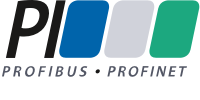Download
OPC UA for PROFINET Encoder
PROFINET , OPC UA , ENCODER
Description:
This document specifies the OPC UA Information Model to represent the Objects and services that comprise PROFINET Encoder. The Information Model defined in this specification can also be seen as an extension of the OPC UA for RIO Information Model.
OPC UA for PROFINET Encoder consists of all Objects and types provided by an OPC UA Server allowing OPC UA Clients to access data and services of Encoder Objects. The Information Model is divided into a PROFINET aspect and a functional aspect. The PROFINET aspect offers detailed Telegram information, the functional aspect provides an Information Model for Encoder Objects by providing EncoderChannelType Objects. The Signal Objects in the PROFINET aspect are connected with components of the Encoder Objects in the functional aspect by dedicated 0:RepresentsSameEntityAs References.
Version: Draft RC 1.00
Order No.: OPC30143
Language: English
This draft is published for testing and review only. It must not be used for development purposes.
Comments to be submitted to www.profibus-project.com, until March 07, 2023.
********************************************************************************************************************************************
Disclaimer / License:
License Conditions for the supply of Specifications
Licensee acquires this license solely from PROFIBUS Nutzerorganisation e.V., having its principal place of business in Karlsruhe, Germany (hereinafter referred to as “Licensor”).
1. Specifications
1.1 Subject of this license agreement is each technical specification issued by the Licensor, in electronic form (hereinafter referred to as “SPECIFICATION”). Software is provided in object code only.
1.2 The SPECIFICATION distributed hereby has been developed by members of the Licensor. Licensor hereby notifies Licensee that the SPECIFICATION is not an industrial standard acknowledged by any standardization body or otherwise and may be further enhanced.
2. Rights and Duties of Licensee
2.1 Licensor hereby grants to Licensee the right to use the SPECIFICATION exclusively for developing and supporting products compliant with the SPECIFICATION. Licensee may copy the SPECIFICATION for this purpose and for data backup purposes.
2.2 Licensee shall not be entitled to modify, decompile, reverse engineer or extract any individual parts of the SPECIFICATION, unless this is permitted by mandatory copyright law. Furthermore, Licensee shall not be entitled to remove any alphanumeric identifiers, trademarks or copyright notices from the SPECIFICATION and, insofar as Licensee is entitled to make copies of the SPECIFICATION, Licensee shall copy them without alteration.
2.2 Licensee shall not be entitled to publish, market or distribute the SPECIFICATION. However, Licensee shall be entitled to transfer the right to use the SPECIFICATION granted to it to a third party, provided that Licensee concludes a written agreement with the third party in conformance with all of the conditions contained in this Section 2 and on the proviso that Licensee does not retain any copies of the SPECIFICATION.
3. Liability of Licensor
3.1 Licensor shall have no obligation to enhance the SPECIFICATION and shall assume no liability in case the SPECIFICATION or future versions thereof shall not be approved as an industrial standard.
3.2 The SPECIFICATION is delivered free of charge "as-is” to all members of the Licensor. Any liability and warranty for the SPECIFICATION - irrespective of the legal reason therefore - e.g. as to quality or title, its correctness, absence of defects, absence of claims of third party rights or in relation to its completeness and/or fitness for any specific purpose is excluded.
The Licensor is not liable for damages due to the use of the SPECIFICATION or for damages which have been caused by the design of hardware or software according to the information provided within the SPECIFICATION. Any liability for consequential, special or indirect damages including, but not limited to, loss of profit, loss of use and business interruption, regardless of the theory of law, are excluded.
3.3 The aforesaid exclusion of liability shall not apply as far as there is a legally binding liability, e.g. under product liability legislation, in cases of intent, of gross negligence, of injury of life, body or health or wilful hiding of a defect, or due to violation of major contractual obligations. However, liability for damages arising from the violation of major contractual obligations shall be limited to the foreseeable damage normally covered by a contract, unless in cases of intent or gross negligence. No change in the burden of proof to the detriment of Licensee is involved by the aforesaid provision.
4. Place of Jurisdiction and Applicable Law
4.1 The sole place of jurisdiction shall be the principal place of business of Licensor.
4.2 All relations arising out of the contract shall be governed by the substantive law of Germany, to the exclusion of the United Nations Convention on Contracts for the International Sale of Goods (CISG).
Files:
| # | Date | Filename | Type | Size |
|---|---|---|---|---|
| 07/12/2022 | OPC-UA-PN-Encoder_30143_RC100_Oct22.pdf | 1 MB | ||
| 07/12/2022 | Nodeset_V1.00.zip | zip | 22 KB |
The downloads section on profibus.com offers a wealth of valuable resources that are essential for companies working in industrial automation. These documents, including technical descriptions, installation guides, and white papers, provide detailed insights into the implementation and use of PROFIBUS and PROFINET technologies. By accessing these resources, engineers and technical teams can significantly improve their understanding and efficiency in deploying robust, standardized communication solutions in industrial environments.
For companies looking to gain even more from the PROFIBUS ecosystem, becoming a member of PROFIBUS & PROFINET International (PI) offers additional benefits. Members enjoy exclusive access to advanced technical documentation, expert certification programs, and development tools that can accelerate innovation and ensure compliance with the latest industry standards. Membership also provides networking opportunities with other industry leaders, fostering collaboration and knowledge sharing, which is crucial in staying ahead in the fast-evolving automation landscape.
By joining PI, companies position themselves at the forefront of industrial communication technology, ensuring they remain competitive and well-equipped to tackle future challenges.
